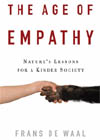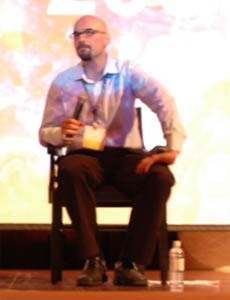
| Welcome to the Club of Amsterdam Journal. “I like men who have a future and women who have a past””– Oscar Wilde, Poet “As for the future, your task is not to foresee it, but to enable it.” – Antoine de Saint-Exupery, Pilot and Author “The distinction between the past, present and future is only a stubbornly persistent illusion.” – Albert Einstein, Physicist “Elegance is not the prerogative of those who have just escaped from adolescence, but of those who have already taken possession of their future.” – Coco Chanel, Fashion Designer “Happiness is not something you postpone for the future; it is something you design for the present.” – Jim Rohn, Business Philosopher Join our next event – share your thoughts February 11 the future of Biosensing Felix Bopp, editor-in-chief |
World Economic and Social Survey 2009
Promoting Development, Saving the Planet

UN report says addressing climate change requires investing in low-emission, high-growth strategies for developing countries
As negotiations for a new global agreement to address climate change enter the final stages before the Copenhagen Climate Change Conference this December, the United Nations is issuing a report today that analyzes the growing demands on developing countries as threats from a warming world are added to longstanding development challenges.
The report, The World Economic and Social Survey 2009: Promoting Development, Saving the Planet, published by the UN Department of Economic and Social Affairs, sees little benefit in ad hoc incremental actions, spelling out instead the potential of a big investment push to deliver on both reducing greenhouse gas emissions and helping communities to cope with climate change, and calling for more truly integrated policy responses to development and climate challenges. It does not shy away from describing the enormity of the adjustments that will have to be undertaken by countries at all levels of development if progress is to be made; or from insisting that the advanced countries will have to deliver resources and leadership on a much larger scale than has been the case to date.
According to the report, active participation of all countries in tackling the climate challenge will only come about if developing countries can maintain rapid economic growth. This will require satisfying the growing energy needs of developing countries: the energy-generating capacity of developing countries is projected to double that of developed countries in the coming decades. This raises the question for climate change negotiators of how poor countries can pursue low-emissions, high-growth development.
The technologies – from low-energy buildings, to new drought-resistant crop strains and more advanced primary renewables – that would allow developing countries to make the switch to a sustainable development path presently do exist. But they are often prohibitively expensive and, the report says, such a transformation would require “a level of international support and solidarity rarely mustered outside a wartime setting.”
The report challenges the thinking that the climate problem can simply be addressed by across-the-board emission cuts by all countries from their present levels or by relying exclusively on market-based solutions to generate the required investments.
Developing countries, the report finds, are facing “vastly more daunting challenges than those confronting developed countries and in a far more constrained environment.” Economic growth remains a priority for them, not only to reduce poverty but also to bring about a gradual narrowing of the huge income differentials with wealthy countries. “The idea of freezing the current level of global inequality over the next half century or more (as the world goes about trying to solve the climate problem) is economically, politically and ethically unacceptable,” the report states.
UN Secretary-General Ban Ki-moon, writing in the report’s preface, says that the Survey “makes the case for meeting both the climate challenge and the development challenge by recognizing the links between the two and proceeding along low-emissions, high-growth pathways. There is no single blueprint for achieving these goals. The Survey examines the key building blocks in order to assess the best possible options available to countries at different levels of development.”
A failure to match words and deeds
The race to keep global temperatures within safe bounds is now a race against time. According to the Intergovernmental Panel on Climate Change, there needs to be a cut in global emissions by 2050 by between 50 and 80 per cent, which is equivalent to a reduction in carbon dioxide (CO2) levels from roughly 40 gigatons (Gt) per year (at present) to 8-20 Gt.
But as the Survey suggests, increased scientific understanding and greater public awareness have not translated into a focused policy response. This is particularly true in today’s advanced industrialized countries, whose two centuries of carbon-fuelled growth lie behind the present warming of the earth. Since 1950, the advanced countries have contributed as much as three-quarters of the increase in global emissions, despite accounting for less than 15 per cent of the world’s population. The failure of wealthy countries to honour long-standing commitments of international support for poverty reduction and adequate transfers of resources and technology remains the single biggest obstacle to meeting the climate change challenge, the Survey contends.
Different economies, different energy outlooks
It is in developing countries that the impacts of climate change are most keenly felt and where the greatest impacts are forecast – more severe droughts in some areas, more intense precipitation in others will wreak havoc with the world’s water supplies and agricultural capacities. Melting glaciers and retreating ice in the Polar regions are contributing to sea level rise, threatening the very existence of small island nations and coastal communities that do not have the resources to adapt.
Estimates cited in the report show that for every 1°C rise in average global temperatures, annual average growth in poor countries could drop by 2-3 percentage points, with no change in the growth performance of rich countries. At the same time, the report notes that developed countries have per capita emissions that are still on average 6 to 7 times greater than those in developing countries.
One of the most overlooked aspects of the climate debate, the report argues, is that the energy needs of developing countries are very different from those of developed countries. The latter have adequate – even excessive – energy services and infrastructure available. Most developing countries, on the other hand, struggle to provide even basic energy services from inadequate infrastructure. Globally, between 1.6 and 2 billion people lack access to electricity, and connecting those people to energy services will cost an estimated $25 billion per year over the next 20 years.
Because of these stark differences, rich and poor countries require different mitigation strategies to address climate change. While a rise in the price of fossil fuels, or changes in lifestyles, may result in the increased use of renewable energy in developed countries, higher fuel costs in developing countries would simply place any modern energy services beyond the means of many more people.
The cost of meeting the needs of the “energy destitute” is still small, the report estimates, particularly when compared with the billions pledged by many developed country governments to rescue their financial sectors and automotive industries. “In comparison, the cost of bringing 2 billion people into the modern energy service system would appear to be a real bargain,” the report suggests, noting that the amount of development aid presently spent on energy is only about $4 billion annually, where at least tens of billions are needed.
A big investment push towards a sustainable future
Still, the challenge of providing everyone with access to some modern form of energy is small in comparison with that of meeting steep rises in energy demand in developing countries to fuel catch-up growth and to provide energy services to growing urban communities.
Expanding cleaner energy services to meet this rise in demand is technologically feasible. However, such a shift, the Survey argues, is neither inevitable nor inconsequential. Recognizing that such a switch “would entail unprecedented and potentially very costly socio-economic adjustments” in developing countries, the Survey argues that achieving such a transformation hinges on the creation of a “global new deal” capable of raising investment levels and channeling resources towards lowering the carbon content of economic activity and building resilience with respect to unavoidable climate changes.
To realize scale economies and the benefits of technological learning, the Survey argues that large upfront investments will need to be made, particularly by the public sector, in new energy infrastructure and in complementary research and development to bring down costs. But these efforts will be hampered by constraints on domestic resource mobilization and the limited ability of many developing countries to raise capital in international markets, particularly bond markets. If investment spending is to go towards ensuring cleaner growth pathways, it will require massive international support by means of a global investment programme.
How much will action cost?
There are widely varying estimates for how much additional financing is needed to address the mitigation and adaptation aspects of climate change, often depending on any number of factors, including the range of the greenhouse gas reduction target. These estimates can range anywhere from as little as 0.2 to about 2 per cent of World Gross Product (WGP), or between $180 billion and $1.2 trillion per year. However, in most projections the big spending would not be required until 2030. The report goes against conventional wisdom by suggesting that significant additional investments in mitigation and adaptation need to take place sooner rather than later, to the tune of at least 1 per cent of WGP annually, between $500 billion and $600 billion. A failure to think in these bolder terms runs the real danger of locking in dirtier investments for several more decades. But by continuing in the present business-as-usual scenario, or making only marginal changes, the permanent loss of projected WGP could be as high as 20 per cent.
By any measure, the Survey says that the amounts from bilateral and multilateral sources currently promised and expected to be available for meeting the climate challenge in the near term are woefully inadequate.
More than half of the incremental costs of greenhouse gas abatement are expected to fall on developing countries, whose energy investments over the coming decades are projected to grow much faster than those of developed countries.
Currently, it is estimated that about $21 billion in official development assistance is dedicated each year to addressing climate change, much of this for mitigation. The total amount of climate financing that is required is a large multiple of that figure. If the international community is serious about a “global new deal,” the Survey suggests, it should be just as serious about committing resources on the same scale as was needed to tackle the financial crisis and defeat political extremism.
According to the report, the difficulty of reaching even the current levels of aid commitments suggests that global financing for climate change will require a much more determined effort on the part of advanced countries to provide bold leadership on the climate issue and bolster international cooperation. But it will also require an effort on the part of developing countries to mobilize a larger share of their resources for cleaner investments along a new, sustainable growth path.
A way forward
Addressing the climate change challenge requires different approaches in developed and developing countries, the Survey suggests. Market solutions, including the development of a carbon market, through “cap and trade” mechanisms or taxation schemes in developed countries, are not the solution for developing countries. “Perhaps the more sensible, forward-looking view,” the report states, “is to recognize that carbon markets will continue to expand but that the pace and scale will not be sufficient to help developing countries break the financial constraint on proceeding along a low-emissions development pathway.”
Rather, the Survey says the preferred option for developing countries should be a combination of large-scale investments and active policy interventions. This would require strong and sustained political commitment by developing country Governments and, as critically, sizeable and effective multilateral support with respect to both finance and the transfer of technology.
The report sets out a range of possible multilateral measures in support of a global investment programme, including a global clean energy fund, a global feed-in tariff regime in support of renewable energy sources, a climate technology programme and a more balanced intellectual property regime for aiding the transfer of clean technologies.
Along with strong domestic government interventions, these can provide guidance to the private sector, the report states, commending developing countries for initiatives moving in this direction, such as Brazil’s ethanol programme and China’s renewable energy programme. An earlier success story cited was the United States’ Tennessee Valley Authority, which helped provide the energy that transformed an entire region after World War II.
According to the Survey, the big difference this time around “is that the new investment deal that is needed to meet the climate challenge must be recognized as a truly global project.”
Next Event

the future of Biosensing
Thursday, February 11, 2010
Location: Waag Society, Nieuwmarkt 4, 1012 CR Amsterdam [Center of the Nieuwmarkt]
Biosensing is the conversion of biological processes into useful information. Incorporating “a variety of means, including electrical, electronic, and photonic devices; biological materials (e.g., tissue, enzymes, nucleic acids, etc.) and chemical analysis” biosensing produces signals to detect biological elements, using related technologies to convert these signals into readable data. From biomedicine to food production, environment to security and defense, biosensing addresses a rapidly growing industry in this field. What is more, the Netherlands is home to a number of scientists who are currently working on a number of biosensors, promising to come up with groundbreaking new technologies in all. For the future of Biosensing a few of these scientists are going to share some insights of their work to describe how our future might be effected as a result of these developments.
The GalaxyDress
The GalaxyDress designed by CuteCircuit is the center piece of the “Fast Forward: Inventing the Future” exhibit at the Museum of Science and Industry in Chicago. The museum is celebrating its 75 years and has commissioned the GalaxyDress for their permanent collection.
The GalaxyDress provides a spectacular and mesmerizing effect being embroidered with 24000 color LEDs, it is the largest wearable display in the world. Constructed using the smallest full-color LEDs that are flat like paper and measuring only 2 by 2 mm.
Club of Amsterdam blog

News about the Future

Biotech violin
Empa researcher Francis Schwarze and Swiss violin maker Michael Rhonheimer’s «biotech violin» dared to go head to head in a blind test against a stradivarius – and won! A brilliant outcome for the Empa violin, which is made of wood treated with fungus, against the instrument made by the great master himself in 1711.
In the test, the British star violinist Matthew Trusler played five different instruments behind a curtain, so that the audience did not know which was being played. One of the violins Trusler played was his own strad, worth two million dollars. The other four were all made by Rhonheimer – two with fungally-treated wood, the other two with untreated wood. A jury of experts, together with the conference participants, judged the tone quality of the violins. Of the more than 180 attendees, an overwhelming number – 90 persons – felt the tone of the fungally treated violin «Opus 58» to be the best. Trusler’s stradivarius reached second place with 39 votes, but amazingly enough 113 members of the audience thought that «Opus 58» was actually the strad! «Opus 58» is made from wood which had been treated with fungus for the longest time, nine months.

Osmotic power plant
The world’s first osmotic power plant opened at Tofte, outside Oslo, Norway.
The plant generates power by exploiting the energy available when fresh water and seawater are mixed. Osmotic power is a renewable and emissions-free energy source that Statkraft has been researching into for 10 years and that will be capable of making a substantial global contribution to eco-friendly power production.
Statkraft is the world’s leader in the development of osmotic power. Osmotic power is clean, renewable energy, with a global potential of 1 600 to 1 700 TWh – equal to China’s total electricity consumption in 2002.
Statkraft is Europe’s largest renewable energy company. The Group develops and generates hydropower, wind power, gas power and district heating, and is a major player on the European power exchanges. Statkraft also develops marine energy, osmotic power, solar power, and other innovative energy solutions. In 2008 Statkraft posted gross operating revenues of EUR 3.1 billion. The group employs 3,200 staff in more than 20 countries.
Permaculture Food Forest
Source: the Permaculture Institute
The idea of forest gardens (food forests) was first articulated by Robert A. de J. Hart in his book ‘Forest Gardening’ and subsequently became one of the keystone concepts in permaculture. A permaculture forest garden mimics the architecture and beneficial relationships of a natural forest. Food forests are not ‘natural’, but are designed and managed ecosystems that are very rich in biodiversity and productivity.
At our farm, the food forests are designed to meet several goals:
- to produce food
- to produce forage for beneficial insects, pollinators, chickens and song birds
- to create wildlife habitat
- to nurture for our bodies through herbal teas and concoctions
- to create beauty and sense of well being

In many locations, the fruit trees produce on average every 2-3 years, due to late frosts or other calamities. But when things work out in the spring, the harvest is great, and it is time to make enough preserves to last for a few lean years.
Comfrey and yarrow work good together as a plant guild near fruit trees in our climate. Yarrow attracts beneficial insects, and has medicinal properties. Comfrey hides in its shade, offering its meaty leaves as high-protein animal forage. Because of the dry climate, normally prolific comfrey does not spread in the areas that are not watered. We use this plant guild around young fruit trees, to shade the trunk and ground.
Guinea chicks eat grasshoppers, catepillars and ants. They also like fruit, and help (somewhat) with cleaning out the orchard floor. In urban situation, a few bantam chickens would be useful for this purpose.
Goats and chickens get tree cuttings, fruit and culled veggies and plants from the Food Forest. We don’t let them browse amidst fruit trees (too much destruction), they get to munch on it in their yard only.
Rhubarb is a good insectary plant a food forest. It is attractive to pollinators and various beneficials, who literally cover the entire plant in the early months of summer. To see it happen, let your rhubarb blossom, and don’t cut the blooming stems until they are dry. Take a look to see green lacewings, beneficial wasps and the lady bugs all up and down the stalk.
Recommended Book

| The Age of Empathy: Nature’s Lessons for a Kinder Society by Frans de Waal For about a decade before I wrote The Age of Empathy, I gathered information on the role of empathy and trust in society — both human and animal. This material came partly from our own research, but most of it from all kind of external sources, recent articles on human behavior, pieces in the media, lectures I attended, clippings from newspapers, and so on. Stories of empathy and altruism are all around us. The book has two main themes. The first is to analyze empathy and it various levels from an evolutionary standpoint, tracing its origin all the way back to early mammals. I would never exclude birds as potentially empathic, but so much less is known about them that I focus on the mammals. Many people have dogs and cats at home, so that they have no trouble understanding the connections that I make between human and animal empathy. The second theme is trickier, because it’s outside my area. This is the role of empathy in society, including human society, such as in politics, religion, the economy, and so on. Couldn’t we use a bit more empathy in society? I feel that the time is ripe for this question, since the emphasis on greed as the driving force has lately been exposed as extremely dangerous. It has brought us near financial ruin, and society is grappling with what to do next. |
Economics of Adaptation to Climate Change. Study
The EACC study estimates that it will cost $75 – $100 billion each year to adapt to climate change from 2010 to 2050.
The World Bank is working with seven pilot countries – Bangladesh, the Plurinational State of Bolivia, Ethiopia, Ghana, Mozambique, Samoa and Vietnam on a new study – the Economics of Adaptation to Climate Change. The study is funded by the Governments of the United Kingdom, Netherlands, and Switzerland and will help inform the international community’s efforts to provide new and additional resources to developing countries through a better understanding of the global costs of adapting to climate change. It will also help decision makers at the national level to better cost, prioritize, sequence and integrate robust adaptation strategies into their development plans and budgets in a context of high uncertainty, competing needs and limited financial resources.
While national governments have to protect their most vulnerable people and identify financing mechanisms to make their countries resilient to climate change, these costs of adapting to climate change are not known.
Futurist Portrait: George Dvorsky

George Dvorsky is Canada’s leading agenda-driven futurist/activist and an award winning blogger, George writes and speaks widely about the impacts of cutting-edge science and technology. He is the Director of Operations for Commune Media, an advertising and marketing firm that specializes in marketing science. He is the co-founder and president of the Toronto Transhumanist Association and served on the Board of Directors for the Humanity Plus from 2004-06. He serves on the Board of Directors for the IEET. George was the organizing chair for TransVision 2004, an international conference addressing the scientific, political and social issues surrounding human biotechnology. George has been interviewed by such publications as The Guardian, the BBC, Radio Free Europe, and Beliefnet. He made an appearance on the CBC’s The Hour and has been profiled in NOW and This Magazine. He has also written for such publications as The Humanist, Canadian Freethinker, Cryonics Magazine and various Thomson & Gale university
www.sentientdevelopments.com
George Dvorsky – Journalism, Human Enhancement & The Singularity
Agenda
Our Season Program 2009 / 2010: | ||
| February 11 18:30-21:15 | the future of Biosensing Location: Waag Society, Nieuwmarkt 4, 1012 CR Amsterdam  | |
| March 25 18:30-21:15 | the future of Sports Location: Amsterdam | |
| April 29 18:30-21:15 | the future of Music Location: Hogeschool van Amsterdam, Amstelcampus, Rhijnspoorplein 1, 1091 GC Amsterdam | |
| June 3 18:30-21:15 | the future of CERN Location: Amsterdam | |




Customer Reviews
Thanks for submitting your comment!